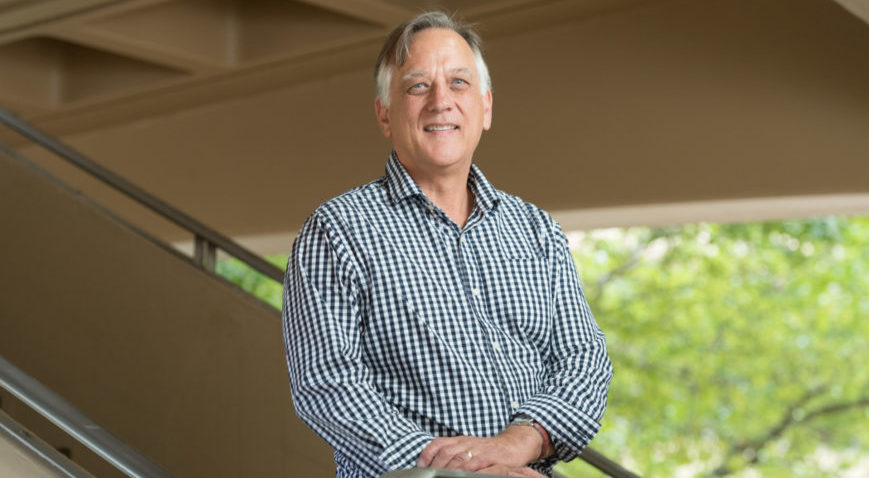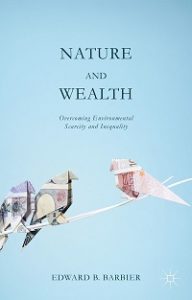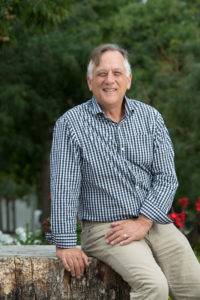
Edward Barbier’s path to becoming one of the world’s leading environmental and resource economists began as a kid, when he saw developing nations firsthand as his father’s government service took the family to southeast Asia.
“Seeing that mass poverty really impressed upon me the difference between very rich countries like the U.S. and the very poor countries there,” Barbier says. “By age 12, I was interested in socioeconomic conditions in developing countries.”
Today, Barbier is one of the most cited environmental economists in the world, and he has left the University of Wyoming to join Colorado State University’s Department of Economics in the College of Liberal Arts. He will also serve as a Senior Scholar in the School of Global Environmental Sustainability.
Sustainability gains
“I’m very excited about the opportunities at CSU,” Barbier says. “There is a great, enthusiastic and growing group of environmental and resource economists here, and I look forward to contributing to SoGES and helping CSU deliver on its sustainability mission.”

“Hiring a scholar the caliber of Edward Barbier is an incredible boon, not just for the Department of Economics but the entire campus,” CSU Provost and Executive Vice President Rick Miranda said. “Our talented, broad-based community of faculty and students who are dedicated to the study of sustainability will benefit immensely from the expertise he brings.”
“Adding Ed Barbier to our already strong economics department will help us take our research, graduate and undergraduate programs to the next level,” said Ben Withers, dean of the College of Liberal Arts. “Ed’s presence at CSU highlights the college’s commitment to research excellence, particularly in fields relating to environmental studies, where CSU has developed a strong national reputation.”
Educational journey
Barbier’s postsecondary path began at Yale University, where he obtained a joint major in economics and political science — and returned to southeast Asia to study economic development in Indonesia as part of a special senior project. At the time, he says, the country was oil-rich and exploiting many of its natural resources, sometimes to the detriment of poor populations in rural areas. Barbier began to hone in on the connections between natural resources, development and environmental sustainability.
In the 1980s that intersection was a fairly new but up-and-coming area of study, so he was encouraged to blaze his own path in graduate school at the London School of Economics and Political Science, where he studied under renowned economist Partha Dasgupta. After earning his Ph.D. at the University of London, Barbier was hired by the International Institute for Environment and Development in London, where he really blossomed, collaborating with scholars in related fields.
“Being at the IIED was a game-changer,” says Barbier, whose seminal 1987 paper “The Concept of Sustainable Economic Development” is still cited to this day. “I was like a kid in a candy shop.” At IIED, Barbier also co-authored, with fellow environmental economists David Pearce and Anil Markandya, Blueprint for a Green Economy in 1989.

It was there that he met his wife, Jo, who is also an economist and is joining CSU’s Department of Economics as a special assistant professor and faculty member in SoGES. Several years later, at the University of York in the UK, the two helped form the interdisciplinary Environment Department. In 2000, Barbier accepted an endowed chair position at the University of Wyoming, where he was elected a fellow of the prestigious Association of Environmental and Resource Economists in 2015.
Contributions to the field
When asked about his landmark contributions to the understanding of how environmental conservation can co-exist with economic development, Barbier says he approaches most issues in his field with three questions:
• What are the economic trade-offs, or costs and benefits to society, of developing natural resources versus conserving them?
• Who gains and who loses from developing the natural resources?
• If the decision is made to develop the natural resources, what is the most efficient and sustainable way to do it?
“That last question, to me, is the most important one, because sometimes the effects of development don’t appear in prices or markets, and they can take their toll in future years and decades,” Barbier explains. “The fascinating thing is, you can scale this analysis to any level you want — the local, regional or even global level. And the issue of who wins and loses is a big consideration.”
Variety of outcomes
He acknowledges that in his consulting work for policymakers around the world, he doesn’t always come down on the side of environmental conservationists; each scenario is different and should be treated on a case-by-case basis. And each requires a multidisciplinary approach.
“How do we maintain long-term sustainability and still use our natural resources?” Barbier asks. “You can’t answer that question with just economics or ecology or physical sciences alone.”
He adds that interdisciplinary work is one of CSU’s primary strengths.
“The problems I deal with are very complex, and you can’t tackle them without natural and environmental scientists,” Barbier says. “I was attracted to CSU because it has a strong group of scholars in those areas, and there is a solid track record of collaboration among them.”
More information about Barbier is available online.